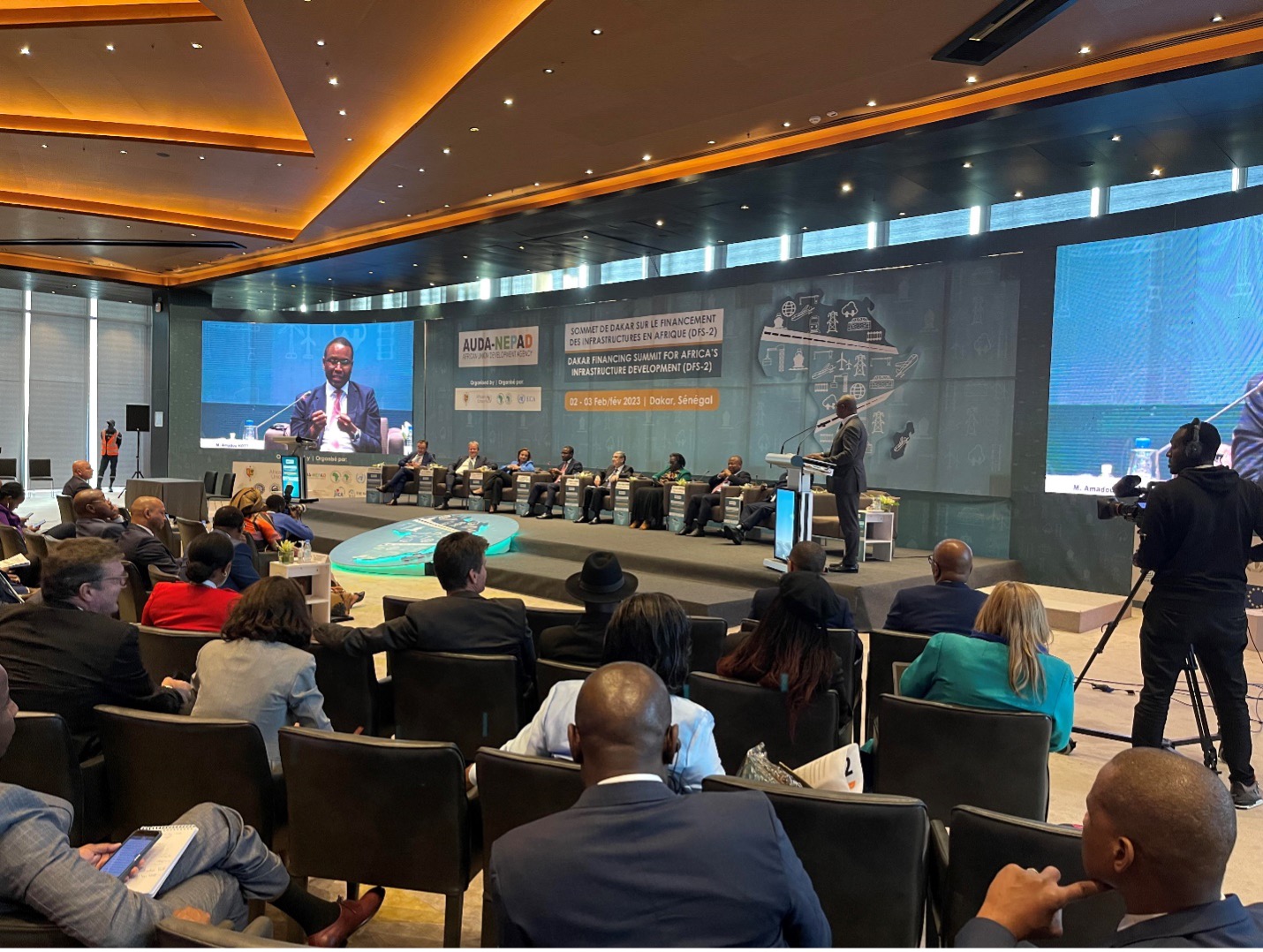Recommended
Across several African countries, there has been a troubling trend of infrastructure being stripped to sell as scrap metal. People have been arrested for ripping out and selling rail sleepers in South Africa and Ghana, pylon and copper wires in Uganda, and streetlamp meters in Liberia. That stripping feels like wanton destruction in countries that so badly need infrastructure, but without jobs or economic opportunities, it is one of the few options available to many poor people. Infrastructure stripping is a particularly stark example of a widespread pattern: that failure to invest in human capital has hamstrung the effectiveness of infrastructure initiatives to deliver jobs and growth.
While it is widely acknowledged there is high demand for infrastructure in low- and middle-income countries, including in the African region, the corollary of investing in human capital is seldom mentioned. But economic and social returns to infrastructure will be significantly higher when accompanied by similar levels of investment in health and education. Without these complementary investments, returns to infrastructure will be low, employment growth will stall, and the best opportunities left to average people may be economically damaging activities like infrastructure stripping. Investors and governments need to realize that investment in infrastructure that is matched by comparable levels of high human capital development delivers better outcomes for investors and beneficiaries alike.
The infrastructure gap
There is a considerable body of literature observing and describing the connection between the availability of functioning infrastructure and the economy. As Tatiana Paley notes, transport infrastructure, for example, “improves the efficiency of local economies through increased mobility and lower costs associated with resource transfer.” The obverse is also true, where weak transport networks increase transaction costs and limit economic opportunities.
For decades, governments and development finance agencies have noted a global infrastructure gap and proposed new initiatives to bridge the divide. In the summer of June 2021, in the lead-up to his first G7 meeting, President Joe Biden proposed an international version of his domestic infrastructure plan. Build Back Better World was meant to be an initiative that brought together leading democracies to close what the White House estimated was a $40 trillion infrastructure gap in developing countries. Four years earlier, the 2017 Global Infrastructure Outlook of the G20’s Global Infrastructure Hub put the estimated the deficit would be $15 trillion by 2040, given projected spending levels. An analysis in Oxford Economics places the deficit even higher, with the total infrastructure financing needs at $94 trillion between 2016 and 2040, 19 percent more than current financing trends would provide. According to the report, “to meet this investment need, the world will need to increase the proportion of GDP it dedicates to infrastructure to 3.5 percent, compared to the 3.0 percent expected under current trends.” The World Bank estimates that low- and middle-income countries will be responsible for an even greater proportion of that financing, about 4.5 percent of GDP. The infrastructure gap is expected to be largest for Africa and then the Americas. In Africa alone, the need is up to $170 billion a year for the next 10 years, according to an African Development Bank report. While estimates vary on its precise size, it is clear there is an immense gap.
The global infrastructure gap is further compounded by the need to adjust to climate change, by building climate resilient infrastructure and shifting the global energy mix from fossil fuels to one dominated by renewable sources. That transition faces a major impediment since “by some estimates, [the cost of building sustainable energy infrastructure] could be as high as USD 3 trillion in annual investments needed by 2050…with 70% of the spending required in emerging markets and developing economies (EMDEs).”
For many developing countries, especially in Africa, infrastructure financing was already well below required levels even before the twin crises of the last three years—COVID and the Russian invasion of Ukraine—which caused sharp spikes in commodity prices. According to UNDP, what progress has been made in financing infrastructure in the developing world has been largely concentrated in larger middle-income economies. Least developed countries, fragile states, and small island nations face a dearth of financing choices and are thus reliant on grants and concessional financing from development finance institutions.
The crises themselves created greater competition for cheap financing: the crisis in Ukraine itself has shifted European attention and assistance from needs in the developing world to one closer at home. As Nancy Birdsall and Ian Mitchell note, “many European countries have inflated their supposed development-assistance totals by including the funds they have spent domestically on receiving Ukrainian refugees… [and] several donors have chosen to cut real aid programs to fund refugees, in effect leading to a situation in which low-income countries are footing the bill for the hosting of Ukrainian refugees.”
Over the last two decades China rose among bilateral lenders as the creditor of choice for many developing countries, especially for those locked outside of capital markets or deemed too risky by other lenders. But even China’s infrastructure lending as waned. “China’s loans to low- and middle-income countries in 2020 amounted to US$13.8 billion. While it is still the world’s largest lender, China’s loans have fallen to about 40% of the record high seen in 2018 (US$33.1 billion).” Per Chatham House, falling Chinese lending to African countries will limit their ability to fund infrastructure, social programs and even respond to climate change.
This decline traditional and non-traditional forms of public capital for infrastructure financing coincides with larger than usual debt burdens from the previous decade and a half. The IMF reports that “public debt ratios” in Sub-Saharan Africa “are at their highest in more than two decades”. As of December 2022, about “22 low-income African countries are either already in debt distress or at high risk of debt distress.”
The role of the private sector
With sovereign debt capacity constraints and a dearth of concessional public finance, private investment is the obvious alternative. In 2015, the World Bank introduced Billions to Trillions, an initiative designed to leverage billions in development financing to unlock trillions in infrastructure financing from the private sector. The private sector does have enough resources to cover infrastructure financing across the world. The World Bank estimates that “pension funds, sovereign wealth funds, mutual funds and other institutional investors” hold over $100 trillion. The Bank also concludes that investing in infrastructure could deliver significant financial returns.
But to date, private sector engagement in infrastructure in the world’s low- and middle-income countries has been limited: they have contributed a negligible 0.67 percent of total infrastructure funding. There are many policy, regulatory and institutional reasons for this limited engagement, but one important factor is a lack of complementary investment in human capital.
The need for complementary investments
The impact that infrastructure investment can generate in an environment of plentiful human capital is illustrated by the Marshall Plan, introduced to shore up European economies and sustain demand for US exports in the wake of World War II. Industrial production in the recipient European countries leapt from just 87 per cent of pre-World War II levels in 1947 to fully 135 percent in 1951, a 55 percent jump in just four years. As Barry Eichengreen notes “the European economy was already highly developed…European recipients had relatively well-trained and educated labor forces…Property rights and rule of law were well established. All this was of particular advantage. It positioned Europe to make the most of donated resources.” Europe in 1945, unlike Africa today, already had the human capital to build and operate infrastructure and work in the factories that benefited from its installation. To increase returns to infrastructure in low- and middle-income countries to Marshall-plan levels, policymakers must increase investment in human capital.
Building infrastructure at scale requires skills in planning, design, building, and maintaining the assets. To attract private capital into infrastructure financing, there has to be a critical mass of the skills required to plan and execute projects on time and budget. One McKinsey report found that “80 percent of infrastructure projects fail at the feasibility and business-planning stage.” Building competence in project preparation has to be an aim of the infrastructure financing industry, but is in particularly short supply in Africa. As the aforementioned report notes, "low technical capabilities, as well as limited financial resources being dedicated to developing feasibility studies and business plans, result in many [projects] being rejected.”
This is followed by need for construction skills. About two years ago, Michele Connolly, KPMG Ireland’s Head of Infrastructure, Governance and Corporate Finance wrote, “the sheer quantum of investment being planned by governments around the world will likely far outstrip the current supply of workers and capabilities. Yet, even before this surge of infrastructure investment, some markets were becoming concerned about growing skills gaps in the industry.” Connolly’s concerns proved prescient as the Financial Times is reporting that, at least in the United States, “more than half a million extra construction workers needed as public funds flood in.” Again, Ed Brady, chief executive of Home Builders Institute told the Financial Times, “We’re putting millions and millions of dollars into infrastructure without anybody to install it…A shovel-ready project with nobody to operate the shovel is worthless.”
The skills gap extends into operation. The Addis Ababa light rail demonstrates the need for complementary investments to ensure that constructed infrastructure delivers. The rail was built by (and financed with loans from) China seven years ago. The news outlet Semafor reports that the network is “on the brink of collapse, with only a fifth of its trains still in service…Only eight of the line’s 41 trains are operational and the network requires a revamp that would cost more than $60 million.” Results like these give pause to private actors looking to invest in infrastructure in this market. This failure is largely due to lack of maintenance and parts. As the cars failed, other cars were cannibalized to keep the line up and running. Without domestic expertise, the $60 million revamp will need to be “carried out by engineers brought in from China.” For any infrastructure system to remain functional, it is imperative to build and maintain a local cohort of skilled labor.
More broadly, for infrastructure to be a source of firm and employment growth (which is vital for financing its own sustainability), firms need skilled and healthy workers to employ. A 2022 paper by Charles Kenny and George Yang makes the connection between investing in physical infrastructure and human capital. They write that the two are complementary since “infrastructure creates demand for a more educated workforce that sees higher incomes if there is a good stock of infrastructure.” They conclude that “overall, the evidence is considerable that greater stocks of human capital increase the demand for infrastructure services as well as quality, sustainability and returns of infrastructure investments in developing countries.” Kenny and Yang’s paper confirm what has been historically true about the interaction between human capital and returns to infrastructure investment.
The private sector recognizes the need
The private sector recognizes the need for complementary investment: Rising foreign direct investment (FDI) flows to developing countries in the last few years has been overwhelmingly directed to only a limited number of countries: channeled into places with both infrastructure and high human capital. Research suggests that (a) human capital is a statistically significant determinant of FDI inflows; (b) human capital is one of the most important determinants; and (c) its importance has become increasingly greater through time.
In Africa, for example, one sector that has attracted considerable investment in the last decade has been the tech sector. “In 2022, Pitchbook recorded $2.9 billion invested across 689 venture rounds in Africa, making it the only region with a year-on-year increase in both deal value and count.” Investment in internet cables, data centers, and other digital infrastructure has continued to grow. But despite this comparative success this, an IFC-Google study of the e-economy in Africa found that Africa’s tech talent still lags other regions. The number of African developers is still small: 700,000 in Africa to 2.1 million in Latin America. Brazil alone has 573,000 developers. So even in a bright spot of investment, human capital constraints limit the sector’s possible growth.
Conclusion
Creating an environment in which the private sector takes a bigger role in financing infrastructure will require improving the attractiveness of those investments. Without substantial investment in human capital, that condition will remain unmet, and the vast infrastructure financing gap will continue to expand. The recent spate of global infrastructure financing initiatives—China’s Belt and Road Initiative, Europe’s Global Gateway, and the G7’s Partnership for Global Infrastructure and Investment—all exclusively focus on financing physical infrastructure. While individual projects financed under these initiatives might include “skills and technology transfer” provisions, the infrastructure financing initiatives themselves have generally not been designed to include components that enhance human capital endowment. If they’re truly to succeed and close the vast infrastructure gap, these initiatives need to launch a human capital component, and major infrastructure funders need to understand that human capital investments are a critical prerequisite for successful projects, not an afterthought.
Rights & Permissions
You may use and disseminate CGD’s publications under these conditions.
Image credit for social media/web: Wollwerth Imagery / Adobe Stock







